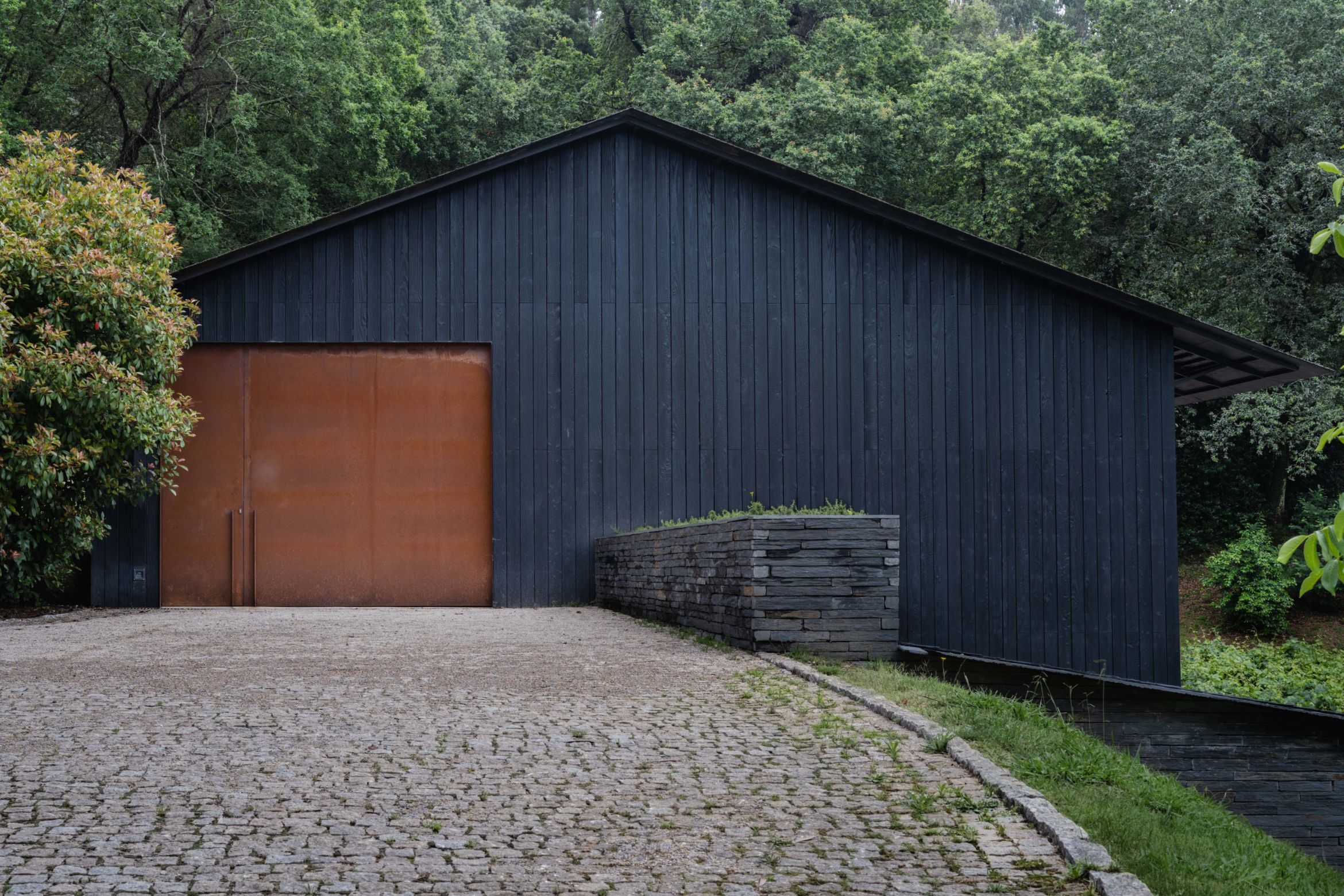With a base in Australia, Studio Nicholas Burns has a decidedly global reach. The design practice has worked in eleven countries so far and its team of architects is spread across Portugal, Mexico, Indonesia, Japan and Singapore. “We utilise what we learn across cultures and value the team’s different perspectives, languages and understandings,” says Nicholas Burns. “The Portugal projects started after a chance meeting through a friend of a friend. I met the client on the island Príncipe, where we worked together trekking through the jungle and travelling on small wooden fishing boats to select the site.”
Burns then explains how further meetings, this time in Portugal, opened up the opportunity to contribute to the wider winery site: “[It] is part of a family estate containing ongoing projects intended for multiple generations. The estate included established vineyards, and the idea was to elevate the winemaking process and provide a subtle frame for the nearby chapel and meditation room. As well as winemaking, the winery will hold dinners for family and friends and provide facilities for the chapel.”
The project has a certain quiet dignity, likely stemming from the aim of nestling gracefully in the landscape. This is an architecture that seeks to sit within its forested – even wild – setting, rather than stand out from it. It is functional and agricultural, but closely connected to place in terms of both natural setting and local culture.

“The Minho region is known for an abundance of underground springs, rivers, forests, huge granite boulders, sandy granitic soil and vinho verde – the local wine,” explains Burns. “The culture of food and wine has not changed much in hundreds of years and is held deeply within the people and land.”
The design for the winery keys into these landscape features, most notably through a large granite boulder than marks the building’s entrance. This was discovered during excavations and incorporated into the design, which also made a point of not removing any trees on the site.
“The connection to the landscape is strong,” says Burns. “Working with the contours, water flows and embedding the building into the earth provided a constant temperature though the seasons, making it ideal for winemaking and very comfortable to work in. The landscape is designed as a connection to the wild forest above – it’s as if the species from the forest floor spilled down the hill, so that the siting will, over time, feel more and more like it was meant to be there.”
Related: NZ architect Bergendy Cooke in Marrakech


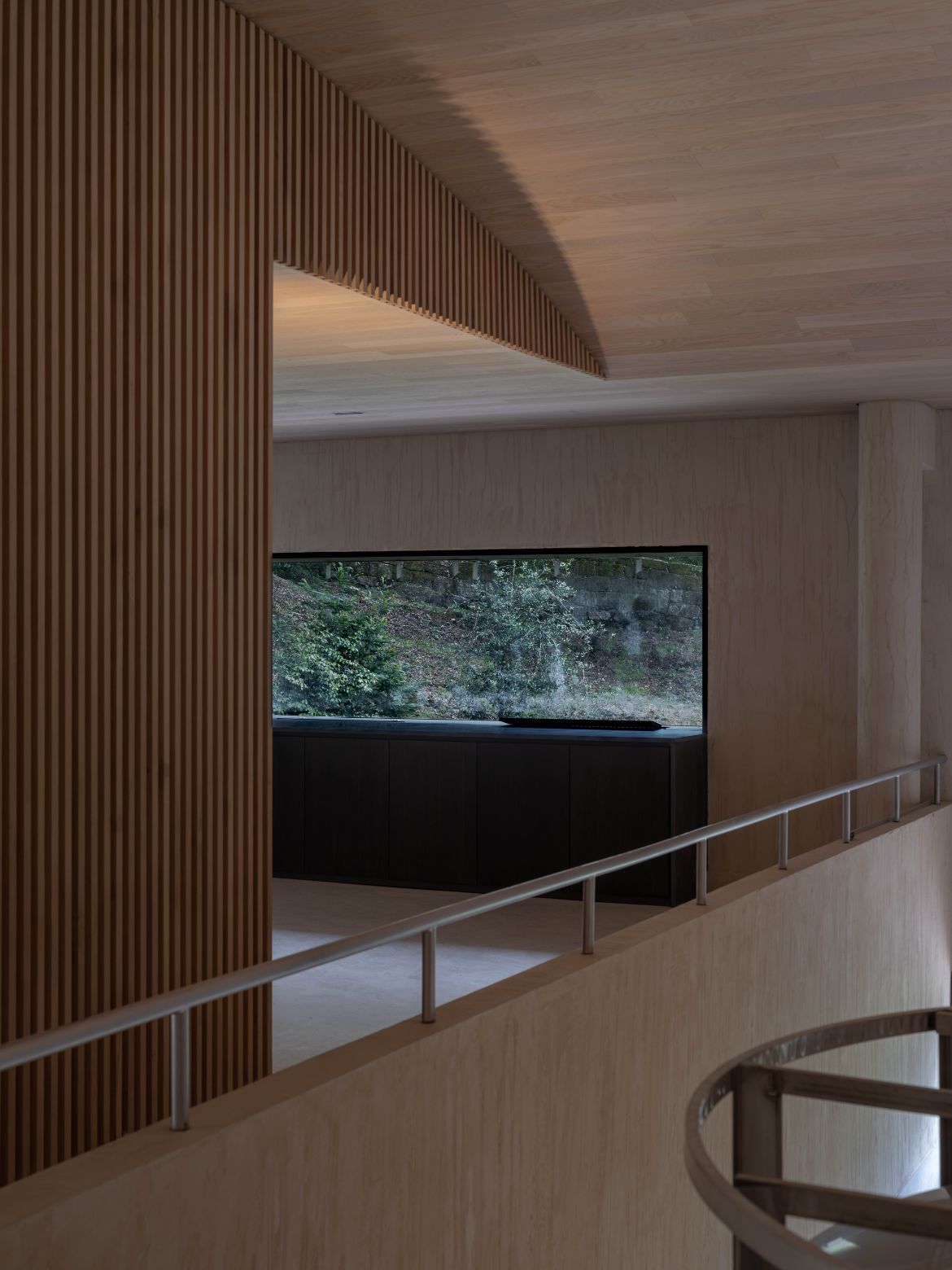
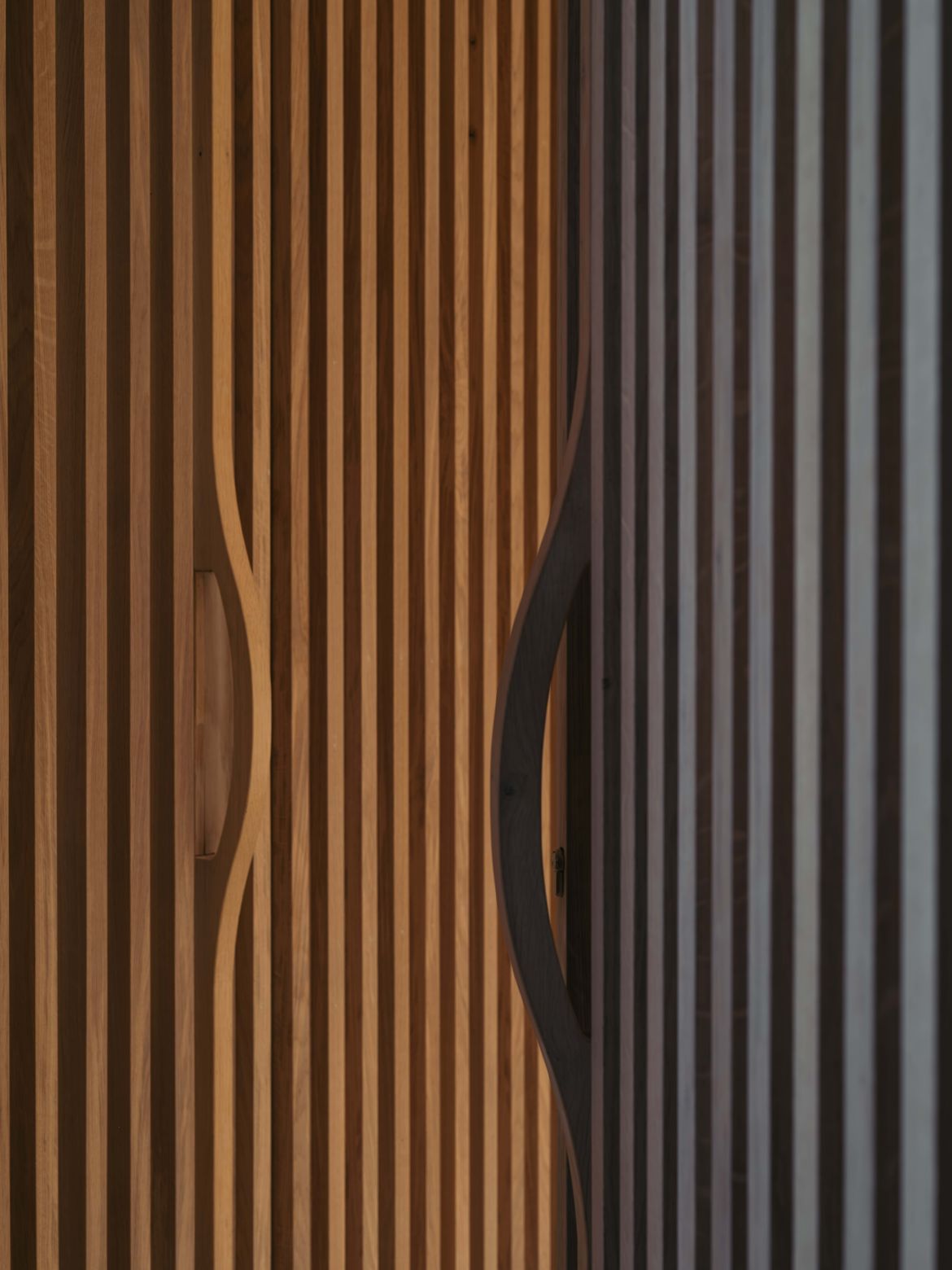
The architecture involves not just natural but human geography too. With the region steeped in winemaking, the studio has worked closely with local winemakers to refine the production process.
Burns elaborates: “Many of the workers have been on the estate for decades. We discussed the operations with them in detail and adopted a gravity-fed winemaking system based on their advice as well as research on traditional winemaking practices around the world, notably in Mallorca, the Loire Valley and Burgundy. Areas for workers to cook and eat as well as wash and change have been integrated seamlessly and, from all these discussions, they were inspired to work in the winery and felt at home immediately.”
The spaces are organised over two levels and connected by a double-height section, allowing for ‘gravity-fed production’ that simply allows for the process to run from top to bottom. The lower level is reserved for machinery and storage, while the upper space functions variously as a professional kitchen, laboratory for wine testing, reception area, dining room, bathrooms and general social interactions.
Finally, though certainly not least, there is the thoughtful approach to materiality. Again, place and context play a central role, with charred wood cladding using a local oak timber and natural slate from the area chosen for the roof. Meanwhile, rusting steel is incorporated as an expression of robust weathering over time, part of the wider approach aiming at allowing the building to recede and settle in the landscape.
“We approach materiality in a connected as well as a contrasting way. The Xisto roofs are typical of old buildings in the area and we had access to master artisans. The charred timber externally was selected to form a facade in shadow, receding and farming the landscape and chapel.
“The interior materials of local oak and traditional plaster are both robust – given the agricultural nature of the building – yet are warm and refined, with inherent textural qualities providing comfortable and inspiring places when people work as well as gather. Fenestration is controlled with framed views, natural light and shadow and to minimise solar heat gain,” says Burns.
Studio Nicholas Burns
nicholas-burns.com
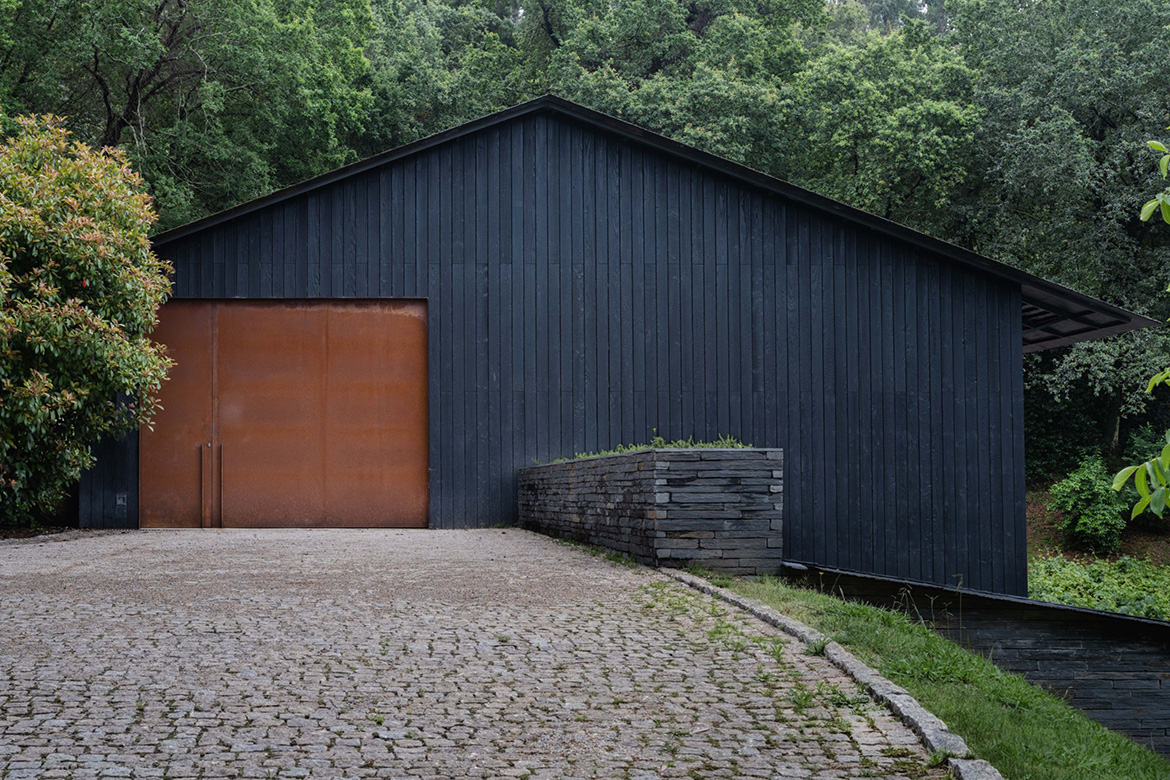

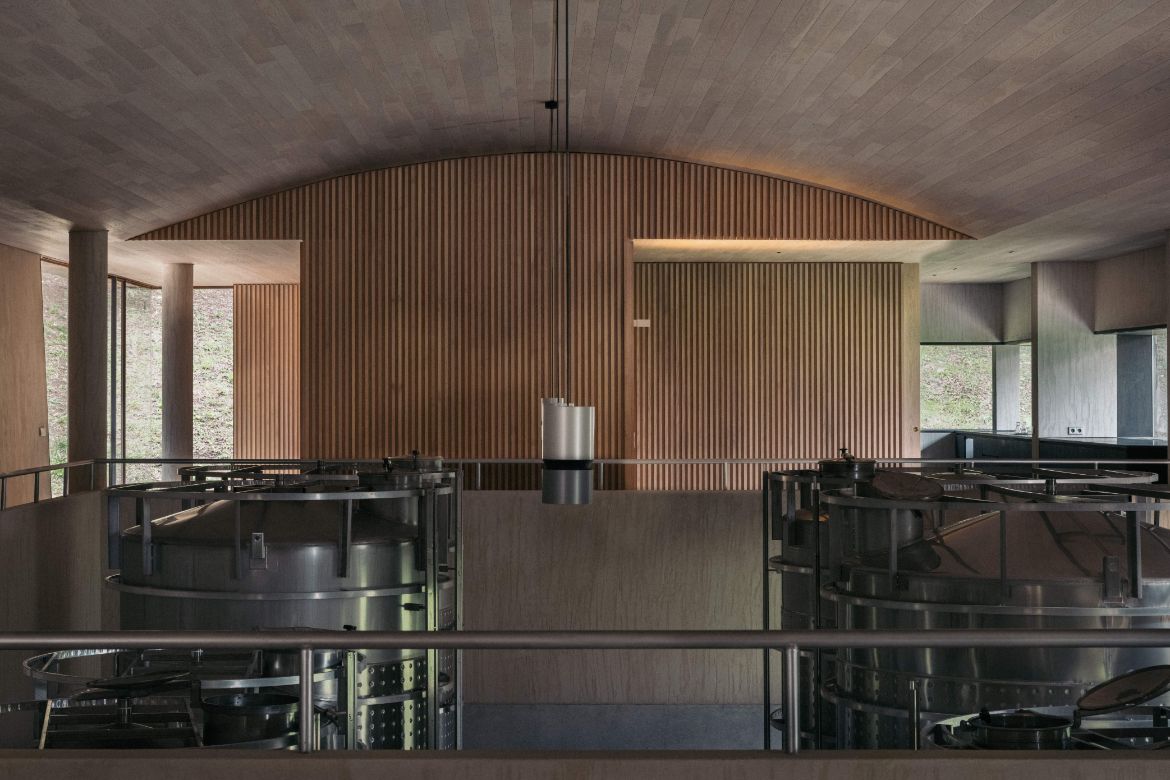

Exploring the power and place of gardens in this beautiful book

